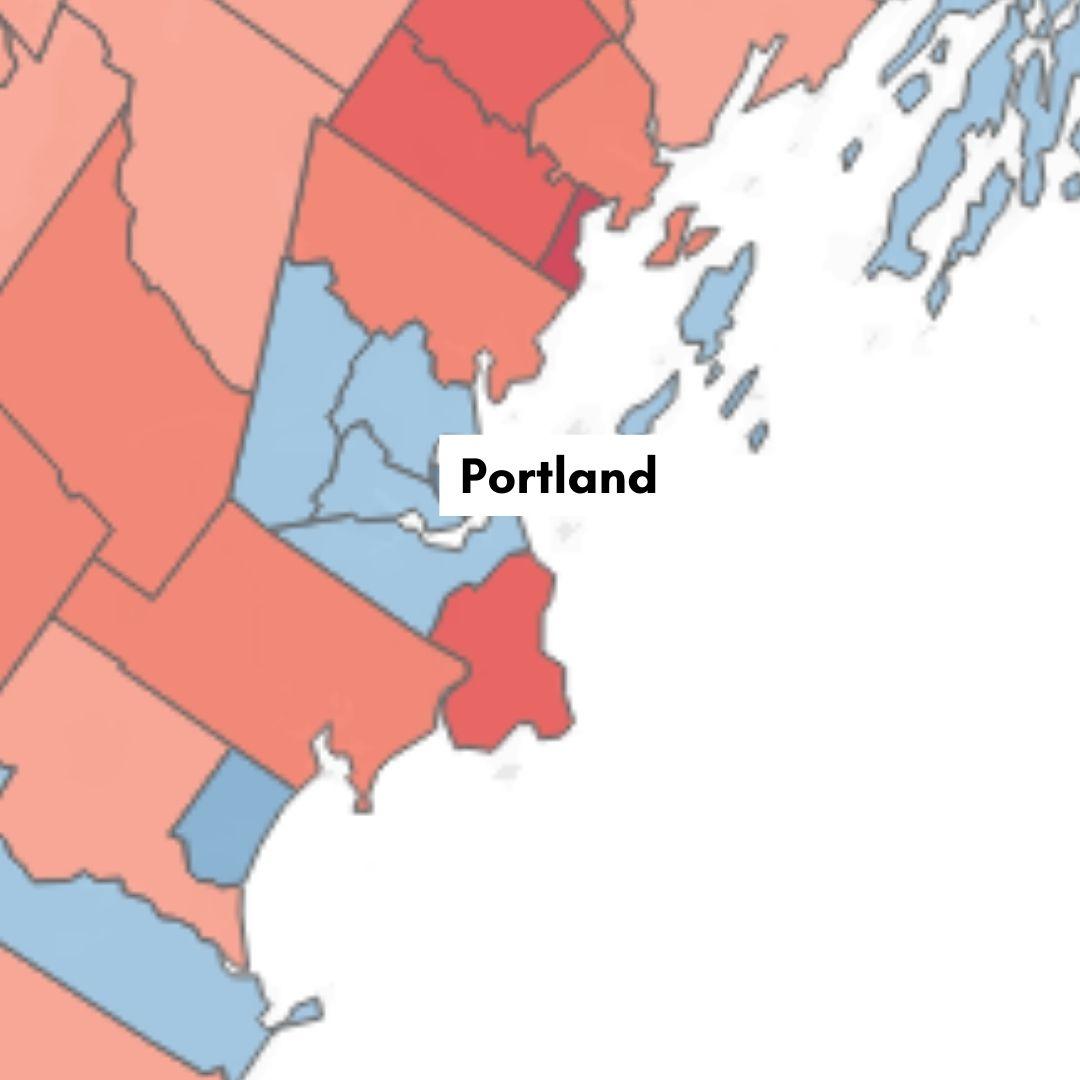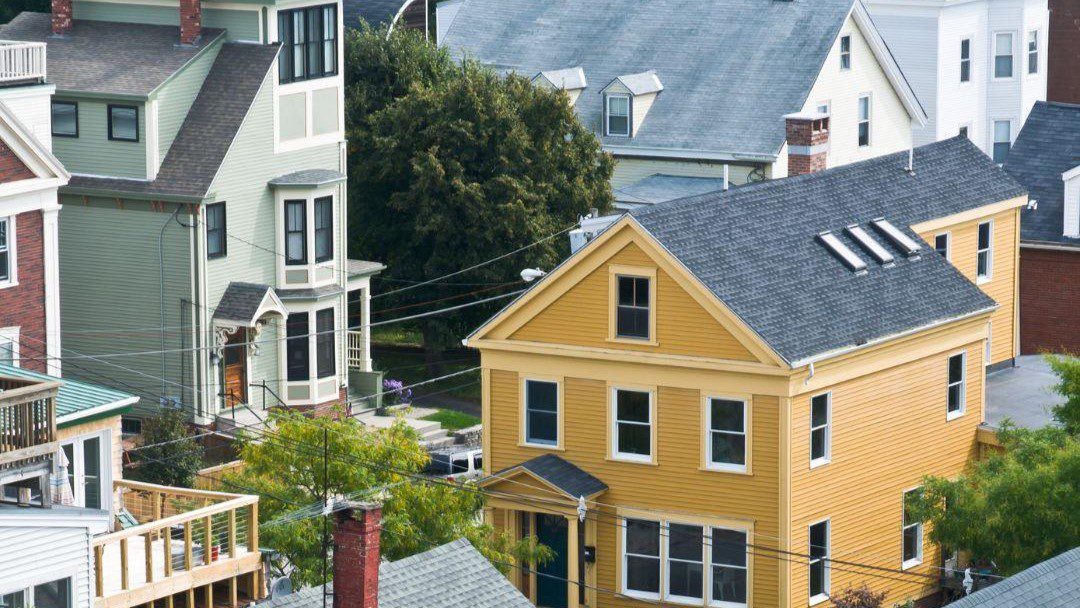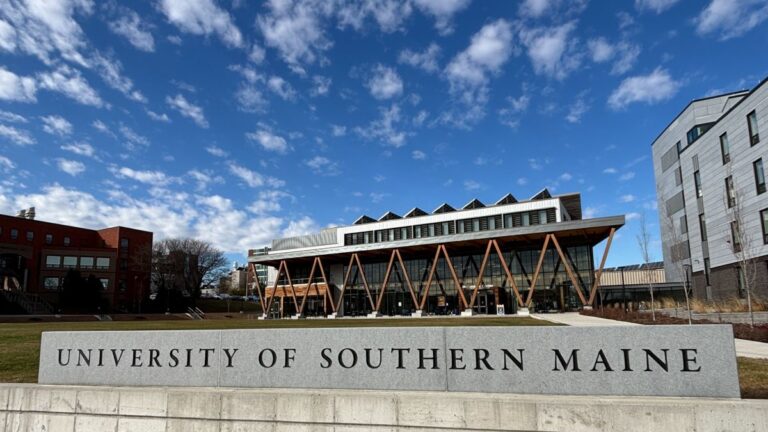Late last month, my husband and I packed up our nine-month old daughter and headed down the street for her first municipal planning workshop. (Such workshops are a rite-of-passage for any infant, and one for which Ruby had studiously prepared by reading/eating her favorite book, “SHH! We have a plan,” which I highly recommend for children and adults alike.)
One of a series of “visioning workshops” held by the town of Bar Harbor, the event was part of the Comprehensive Planning process, which has been underway for months, and was a chance for community members to offer their thoughts to town staff on a range of issues, including transportation, tourism, growth and housing.
We talked briefly about public transportation (people wanted more of it, and more riders for the options that already exist), tourism (how to balance the needs of the millions of annual visitors with the town’s roughly 5,000 year-round residents) and growth (what does it mean to grow sustainably?).
But the topic that took up almost the entire hour-and-a-half long discussion was, no surprise, housing.
Bar Harbor, like the state and the nation, has a housing crisis. We have too little of it, and what we have is too expensive for the vast majority of people — the median home price here last year was $625,000, far above the statewide median of $334,000 (which 72 percent of Maine households cannot afford).
To own a typical home in Bar Harbor, a family would need to make more than $100,000 per year, after forking over $125,000 for a down payment.
Why are we talking about housing in an environmental newsletter? Because housing is an environmental issue — perhaps, I would argue, one of the most consequential of all.
Where and how we build our houses matters — to the deer who once overwintered in the field that became a subdivision, or the salamanders who must now brave a treacherous road crossing to get to their breeding grounds.
As we spread farther and farther out — either because we want a few acres in the countryside, or we can’t find or afford a place in town — we fragment wildlife habitat into smaller and smaller blocks, whose edges are easily colonized by non-native species.
We degrade lakes with runoff from development, and create more and more air pollution and greenhouse gas emissions from the cars we have to drive to get to the grocery store and school and library, all now that much farther away.
“Until recently, abundant habitat and open space were a fortunate accident of Maine’s development patterns,” reads a treatise on the state’s wildlife legacy from Beginning with Habitat, a division within the state’s Department of Inland Fisheries and Wildlife that helps individuals and municipalities plan for habitat conservation. “These areas were not parks or public spaces; they were large blocks of privately owned land supported by a generous Maine tradition of public access.”
Now, however, “With development pressures and tax burdens, many landowners have decided to sell or subdivide their properties. The fortunate accident of having private land available for habitat and recreation is ending.”
There’s also the energy use of our homes themselves. Heating, cooling and lighting of buildings is responsible for 30 percent of Maine’s greenhouse gas emissions, and the state is more reliant on heating oil than anywhere else in the nation — a situation that Annie explored in her excellent series, “Hooked on Heating Oil,” which you should read if you haven’t already.
So: housing matters. “We can’t beat the climate crisis without rethinking land use,” said the authors of a 2021 report from the Brookings Institution.
At the workshop in Bar Harbor last month, the word of the night was “density.” “Build up, not out!” one participant shouted excitedly. Heads nodded and a murmur of agreement swept through the room.
The density advocates in Bar Harbor may get their wish. A law signed last year by Governor Mills, LD 2003, essentially bans single-family zoning, requiring municipalities to allow two to four units per house lot, depending on certain conditions, and allows developers to build 2.5 times the number of units allowed under local zoning if they meet affordability criteria.
The law also legalizes Accessory Dwelling Units (sometimes called in-law apartments or granny flats) statewide, and eliminates parking requirements for them. Many of the law’s provisions were set to take effect July 1, although it looks likely that will be delayed until January, said several municipal planners, to give towns time to comply.
LD 2003 is based on recommendations from the Commission to Increase Housing Opportunities in Maine, which completed its work in 2021. The Commission was largely focused on how to build more housing that people could afford, in places they want to live.
It may have benefits for habitat and climate, too. For the reasons we discussed above (mainly that they tend to drive less and live in smaller homes or apartments that don’t require as much energy to heat and cool), households in denser neighborhoods typically emit fewer greenhouse gases than those that are further from city centers.

Residents in Portland and Westbrook, for instance, have a lower carbon footprint, on average, than those in surrounding towns, according to this map from researchers at the University of California, Berkeley.
But, as the New York Times pointed out, “density isn’t the only thing that matters. Wealth does, too,” since richer Americans “tend to buy more stuff — appliances, cars, furnishings, electronic gadgets — and travel more by car and plane, all of which come with related emissions.”
This is evident from the UC Berkeley map, which shows residents in Cape Elizabeth, Cumberland, North Yarmouth and Falmouth, all among the state’s wealthiest zip codes, as having high carbon footprints, on average, than anywhere else in Maine.
A lot of those emissions are from things we can control, if we so choose. But some, like housing, are governed by policy over which most people (unless you decide to run for Planning Board or City Council) have limited control.
“We need to be building smaller homes in denser places, closer together and closer to jobs, to public transportation,” Jenny Schuetz, a housing researcher at the Brookings Institution, told the Times. “But the locations where we should be adding a ton more housing have made it really hard to build.”
In a 2018 paper, researchers found that the most effective way for local communities to reduce emissions was for municipalities to incentivize building in underutilized areas, which planners call “infill development.”
Making old homes more efficient can also help, as can switching to non-fossil fuel based sources of electricity. In Maine, which has a long history of home rule, communities have a lot of control over this, and the ability to guide development away from sensitive habitat and toward more walkable, bikeable towns.
As Zack Subin, a senior associate at RMI’s urban transformation program, told The Times: “Anyone who cares about climate policy really needs to pay a lot more attention to housing.”







